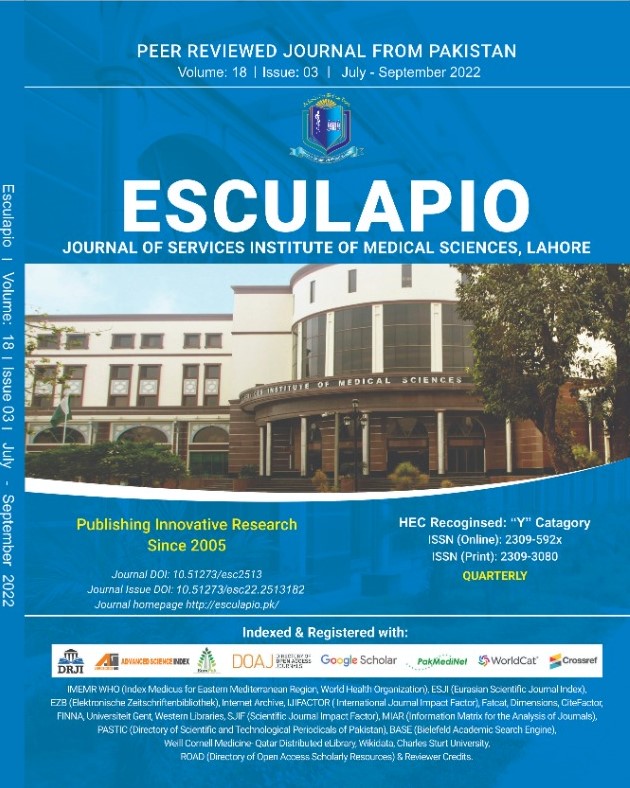Association of Students Self-Efficacy Scores with Academic Performance in Health Care Students
DOI:
https://doi.org/10.51273/esc22.2518329Keywords:
Students Self-efficacy score, Academic PerformanceAbstract
Objective: To record self - efficacy scores of first year MBBS and BDS students using Student Self -Efficacy Scale & to identify association between self-efficacy scores and academic performance of first year MBBS and BDS students in their first block/term exam.
Method: This cross sectional study was carried out at Foundation University School of Health Sciences, after ethical approval using non-probability convenience sampling. First year MBBS and BDS students (n= 200) were asked to respond on a validated 10 item SSE scale. Students' Physiology performance in exam was grouped as 1) High 75% and above, 2) Average 50-74%, 3) Low below 50%. The SSE scores were labeled as 1) High above 30, 2) Average 20-29 and 3) Low below 20. SPSS 21 was used for calculating descriptive
statistics and correlation.
Result: Data of 178 received responses on SSE scale and term exam scores showed students falling in High SSE scores were 42.1 % (n=75), average 49.4 % (n=88) and low 8.4 % (n=15). Total High performers were 26.9 % (n=48), average 57.8 % (n=103) and low 15.1 % (n=27). A significant positive association between SSE and the academic scores (r=0.64, P= 0.00) was found using Pearson Correlation Coefficient.
Conclusion: Study indicates that higher the self-efficacy score of the students, the higher their exam scores.
How to cite: Ahsin Emaan, Ahsin S, Ashraf H, Imran M. Association of Students Self-Efficacy Scores with Academic Performance in Health Care Students. Esculapio - JSIMS 2022;18(03):










